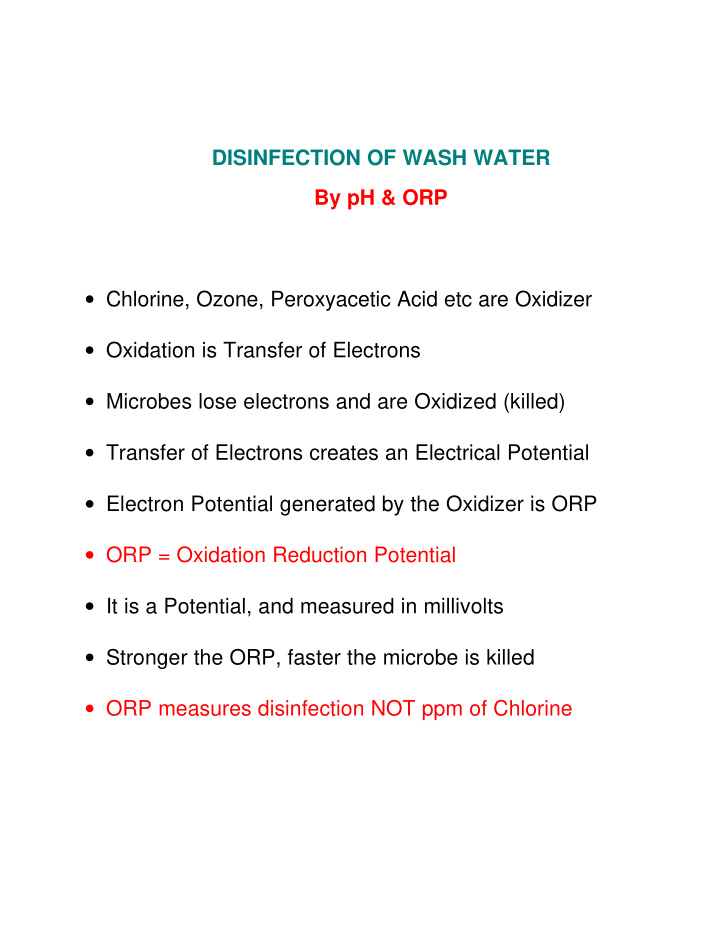



DISINFECTION OF WASH WATER By pH & ORP • Chlorine, Ozone, Peroxyacetic Acid etc are Oxidizer • Oxidation is Transfer of Electrons • Microbes lose electrons and are Oxidized (killed) • Transfer of Electrons creates an Electrical Potential • Electron Potential generated by the Oxidizer is ORP • ORP = Oxidation Reduction Potential • It is a Potential, and measured in millivolts • Stronger the ORP, faster the microbe is killed • ORP measures disinfection NOT ppm of Chlorine
ORP Chlorine + electron Killed Microbe ORP (mV) KILL TIME E. COLI 450 Infinite 500 1 hour 550 100 seconds 600 10 seconds 650 0 seconds Experience shows that tougher organisms require slightly higher ORP Listeria, Salmonella, Yeast, Mold need ≥ 750mV Typical ORP in Produce Wash Water is 650 mV
CHLORINE CHEMISTRY Combined Chlorine Total Chlorine Free Chlorine - OCl pH HOCl 6.5 95% 5% 7.0 80% 20% 7.5 50% 50% 8.0 20% 80% HOCl + e - - OCl HOCl = Fast Oxidizer (Sanitizer) - OCl = Slow Oxidizer (No Sanitation) Maximum Efficiency of Chlorine is at pH 6.5 Conclusion: pH 6.5 and ORP 650 mV (not ppm)
Automation of Water Treatment Process pH & ORP Operation: • Sensors monitor pH and ORP • Control automatically turn chemical pump On/Off as needed • Always maintain a tight chemical concentration range • Inject Chemical only on demand or as needed • Self Maintains and adjusts to organic load • Datalogger maintains a continuous record • Operates only when the process is ON • Smart Logic allows "Hands Free" Operation • Special sensors require low maintenance
Advantages: • Continuous Digital Readout • Continuous Chemical Control • Continuous Recording • Efficient Chemical Use and minimize Waste • Increase Product Shelf Life • Increase Product Safety • Built-In Safety Alarms and Chemical Shut-Off • Save Labor • Save Time • Save $ • Strengthen HACCP • Provide Efficacy to the Process • Satisfy Food Safety Guidelines (WGA, IFPA)
Recommend
More recommend